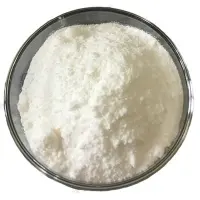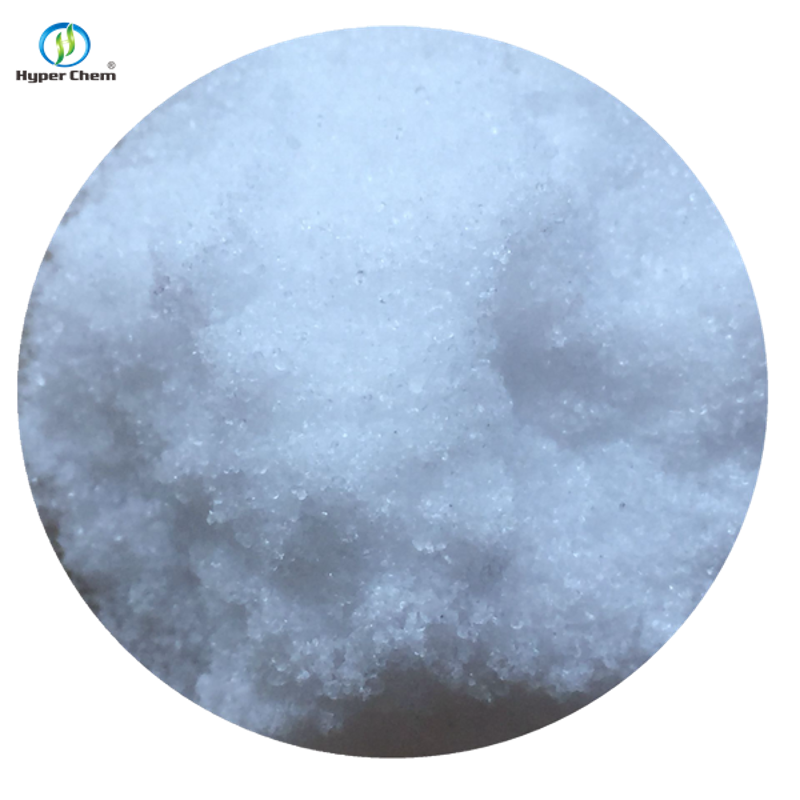-
Categories
-
Pharmaceutical Intermediates
-
Active Pharmaceutical Ingredients
-
Food Additives
- Industrial Coatings
- Agrochemicals
- Dyes and Pigments
- Surfactant
- Flavors and Fragrances
- Chemical Reagents
- Catalyst and Auxiliary
- Natural Products
- Inorganic Chemistry
-
Organic Chemistry
-
Biochemical Engineering
- Analytical Chemistry
-
Cosmetic Ingredient
- Water Treatment Chemical
-
Pharmaceutical Intermediates
Promotion
ECHEMI Mall
Wholesale
Weekly Price
Exhibition
News
-
Trade Service
Author | Chen Wenqiang, Ph.
D.
Editor | The cerebral cortex is responsible for many high-level cognitive functions, including decision-making, language comprehension, and sensory information processing
.
In the process of neural development, cortical precursor cells can produce a variety of neuron and glial cell types to form a new cortex
.
Research on neurodevelopment in rodents suggests that the two main cortical neurons-glutamatergic excitatory neurons and GABA inhibitory interneurons are produced by two different precursor cells [1 -2]
.
However, there are a few studies on human brain development that suggest that cortical precursor cells may produce cortical inhibitory neurons, and these results cannot be mutually corroborated, limiting our understanding of the developmental potential of human cortical precursor cells
.
On December 15, 2021, researchers from the University of California, San Francisco published an online research paper titled Individual human cortical progenitors can produce excitatory and inhibitory neurons in Nature.
By developing a technology called STICR, combined with single Cell sequencing and a tracer to identify the clonal relationship.
The clone lineage tracking of 1912 primary human cortical precursor cells from the human brain revealed that human cortical precursor cells can produce both excitatory neurons and Cortical interneurons challenge traditional views and help us better understand the diversity of human cortical neurons
.
Researchers have developed a lentivirus-based coding technology STICR, which can permanently label cells and their progeny, and then use the technology to label primary human cells derived from cortical blastocysts, culture in vitro for 6 weeks and perform single cell sequencing ( Figure 1).
Based on differential gene expression and specific cell type marker genes, the main three cell type trajectories are determined-excitatory neurons, GABA inhibitory neurons and glial cells (Figure 1)
.
Figure 1.
Cortical precursor cells labeled with STICR technology can produce three main cortical cell types.
To determine the lineage relationship of cortical precursor cells, the researchers analyzed the relative proportions of the trajectories of these main progeny cell types in multi-cell clones , Found that most of them contain excitatory neurons
.
Afterwards, the researchers concentrated on confirming the transcriptional characteristics of cortical GABAergic neurons, and divided GABAergic inhibitory neurons into three subgroups, IN.
1, IN.
2, and IN.
3 (Figure 2)
.
Among them, IN.
1 specifically expresses cortical interneuron marker genes SST and NPY, TAC3 and NXPH1, etc.
, including a small number of progeny cells derived from cortical precursor cells, and mainly derived from the medial ganglion eminence (MGE)
.
Interestingly, the researchers found that most (79%) multicellular clones contain both excitatory neurons and IN.
3 interneurons, suggesting that some human cortical precursor cells can produce both excitatory neurons and Can produce interneurons
.
The previous view believed that these two main types of nerve cells originated from spatially different precursor cell populations during the development of the forebrain
.
Figure 2.
The three main interneuron subgroups produced by human cortex precursor cells.
This question challenged the traditional view and discovered the human cortex precursor through the deep lineage tracing of 1912 human cortex precursor cells (Figure 3).
The cell population can produce both excitatory neurons and interneurons
.
The question that future research needs to answer is, what is the molecular mechanism that regulates the local production of these inhibitory neurons? Does the development of the mouse brain require the participation of the Sonic Hedgehog signaling pathway [3]? Answering these questions will help us analyze the origin and mechanism of human brain development
.
Figure 3.
This article uses deep lineage tracing technology to reveal the different developmental potential of human cortical precursor cells.
Original link: https://doi.
org/10.
1038/s41586-021-04230-7 Platemaker: Eleven References [ 1] Anderson, SA, Eisenstat, DD, Shi, L.
& Rubenstein, JL Interneuron migration from basal forebrain to neocortex: dependence on Dlx genes.
Science 278, 474–476 (1997).
[2] Gorski, JA et al.
Cortical excitatory neurons and glia, but not GABAergic neurons, are produced in the Emx1-expressing lineage.
J.
Neurosci.
22, 6309–6314 (2002).
[3] Zhang, Y.
et al.
Cortical neural stem cell lineage progression is Regulated by extrinsic signaling molecule Sonic hedgehog.
Cell Rep.
30, 4490–4504.
e4 (2020).
Reprinting instructions [Original articles] BioArt original articles are welcome to be shared by individuals.
Reprinting is prohibited without permission.
The copyright of all published works All owned by BioArt
.
BioArt reserves all legal rights, offenders must be investigated
.
D.
Editor | The cerebral cortex is responsible for many high-level cognitive functions, including decision-making, language comprehension, and sensory information processing
.
In the process of neural development, cortical precursor cells can produce a variety of neuron and glial cell types to form a new cortex
.
Research on neurodevelopment in rodents suggests that the two main cortical neurons-glutamatergic excitatory neurons and GABA inhibitory interneurons are produced by two different precursor cells [1 -2]
.
However, there are a few studies on human brain development that suggest that cortical precursor cells may produce cortical inhibitory neurons, and these results cannot be mutually corroborated, limiting our understanding of the developmental potential of human cortical precursor cells
.
On December 15, 2021, researchers from the University of California, San Francisco published an online research paper titled Individual human cortical progenitors can produce excitatory and inhibitory neurons in Nature.
By developing a technology called STICR, combined with single Cell sequencing and a tracer to identify the clonal relationship.
The clone lineage tracking of 1912 primary human cortical precursor cells from the human brain revealed that human cortical precursor cells can produce both excitatory neurons and Cortical interneurons challenge traditional views and help us better understand the diversity of human cortical neurons
.
Researchers have developed a lentivirus-based coding technology STICR, which can permanently label cells and their progeny, and then use the technology to label primary human cells derived from cortical blastocysts, culture in vitro for 6 weeks and perform single cell sequencing ( Figure 1).
Based on differential gene expression and specific cell type marker genes, the main three cell type trajectories are determined-excitatory neurons, GABA inhibitory neurons and glial cells (Figure 1)
.
Figure 1.
Cortical precursor cells labeled with STICR technology can produce three main cortical cell types.
To determine the lineage relationship of cortical precursor cells, the researchers analyzed the relative proportions of the trajectories of these main progeny cell types in multi-cell clones , Found that most of them contain excitatory neurons
.
Afterwards, the researchers concentrated on confirming the transcriptional characteristics of cortical GABAergic neurons, and divided GABAergic inhibitory neurons into three subgroups, IN.
1, IN.
2, and IN.
3 (Figure 2)
.
Among them, IN.
1 specifically expresses cortical interneuron marker genes SST and NPY, TAC3 and NXPH1, etc.
, including a small number of progeny cells derived from cortical precursor cells, and mainly derived from the medial ganglion eminence (MGE)
.
Interestingly, the researchers found that most (79%) multicellular clones contain both excitatory neurons and IN.
3 interneurons, suggesting that some human cortical precursor cells can produce both excitatory neurons and Can produce interneurons
.
The previous view believed that these two main types of nerve cells originated from spatially different precursor cell populations during the development of the forebrain
.
Figure 2.
The three main interneuron subgroups produced by human cortex precursor cells.
This question challenged the traditional view and discovered the human cortex precursor through the deep lineage tracing of 1912 human cortex precursor cells (Figure 3).
The cell population can produce both excitatory neurons and interneurons
.
The question that future research needs to answer is, what is the molecular mechanism that regulates the local production of these inhibitory neurons? Does the development of the mouse brain require the participation of the Sonic Hedgehog signaling pathway [3]? Answering these questions will help us analyze the origin and mechanism of human brain development
.
Figure 3.
This article uses deep lineage tracing technology to reveal the different developmental potential of human cortical precursor cells.
Original link: https://doi.
org/10.
1038/s41586-021-04230-7 Platemaker: Eleven References [ 1] Anderson, SA, Eisenstat, DD, Shi, L.
& Rubenstein, JL Interneuron migration from basal forebrain to neocortex: dependence on Dlx genes.
Science 278, 474–476 (1997).
[2] Gorski, JA et al.
Cortical excitatory neurons and glia, but not GABAergic neurons, are produced in the Emx1-expressing lineage.
J.
Neurosci.
22, 6309–6314 (2002).
[3] Zhang, Y.
et al.
Cortical neural stem cell lineage progression is Regulated by extrinsic signaling molecule Sonic hedgehog.
Cell Rep.
30, 4490–4504.
e4 (2020).
Reprinting instructions [Original articles] BioArt original articles are welcome to be shared by individuals.
Reprinting is prohibited without permission.
The copyright of all published works All owned by BioArt
.
BioArt reserves all legal rights, offenders must be investigated
.







